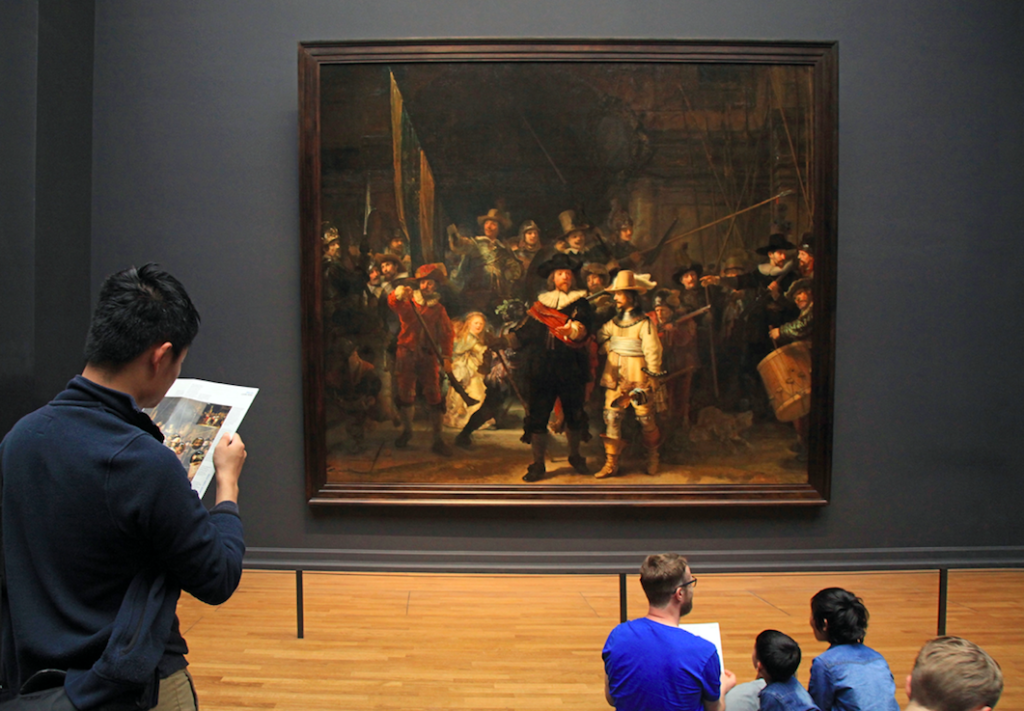Sotheby’s Institute Trains Students in the Subtle Skill of Appraising Art

By Kerri Dean
How much is that piece of art worth?
Whether you want to know in Antiques Roadshow-esque fashion or for legal reasons, receiving an approximate valuation for one’s property can be exciting—sometimes nerve-wracking, too.
For the past several years, Sotheby’s Institute of Art – Los Angeles at CGU has offered a course on contemporary art appraisal as part of its master’s program in Art Business. Taught by Karen McManus, president of Jacqueline Silverman & Associates, a boutique Los Angeles appraisal firm, and an adjunct professor, the course helps demystify the process and explain the importance of proper appraisal. It is intended to prepare students to understand the duties of an appraiser, recognize types of value, and determine appropriate marketplaces.
The question of valuation comes up quite often in business schools, yet few schools offer courses in appraisal. The course is unique to CGU and cannot be found in other Southern California programs.

There are some basic ways to assess that work of art that you found in your grandmother’s attic (see sidebar below), but a serious appraisal of art, as with other types of property, requires professional experience for various reasons, McManus explained.
For one thing, art owners require “accurate, current evaluations” for adequate insurance coverage. And for those thinking of donating some of their favorite pieces of art, they need to know a few appraisal tips before making that tax write-off. McManus emphasized that the IRS has specific requirements for donations, including using only qualified appraisers.
So how does an appraisal start? It depends, McManus said. “Appraisal is very case-by-case.”
Students in her course are introduced to some of the top indicators of value, which include: the identity of the artist, the date of execution, and the artwork’s style.
McManus looks to see if the style is a typical example of an artist’s work to determine its value. In addition to size and signatures, she also suggests looking, if it is a painting, at the back of the artwork for telltale signs of its value.
“If it has, say, 10 exhibit labels, it adds value,” McManus said. “That shows the piece was in a lot of exhibits and seen as valuable since curators and museum professionals kept displaying the piece as important.”
The same methods that McManus teaches her students were demonstrated recently by an Antiques Roadshow appraiser when a visitor asked for an assessment of a Rembrandt etching printed from a copper plate by the artist himself.
The appraiser looked at the piece’s front and back for a variety of things—including paper quality and how the ink sits on the paper—and determined that the piece, bought for a flea-market price, would probably fetch $4,000 to $6,000 at auction.
Physical examination of the work of art, McManus said, is an exciting part of the discovery process. Aside from this, appraisers must also consider market activity.
Weighing market data is often an appraiser’s hardest job. Appraisers look at market activity for current trends, evaluate different media at different levels, and determine what is the common marketplace for each piece. An appraiser looks at data on where the activity is—galleries, studios, auctions—and who the artist is and the type of media used.
“Is it worth it to me?” is the question buyers need to ask themselves, McManus explained. Art consumers set the market prices that appraisers use for comparative market values.
Another factor in appraisal prices is the fact that the art market shifts with other economic markets. Most recently, the 2008-2009 economic crash drastically depressed the art market. McManus said that the crash continues to affect some artists, and that the contemporary market is not necessarily as booming as it may seem.
As market trends shift, and the art world continuously evolves, the need for knowledgeable appraisers remains strong.
For McManus, appraising takes more than just a skillful eye. Like the subject under appraisal, “appraising is not a science, it’s an art, too.”
Kerri Dean is a doctoral student in the history department who is studying modern American history and museum studies.
How To Appraise a Painting: Some Tips to Consider
Before you go to a professional appraiser, you might consider a quick preliminary examination of that old painting your grandmother left you in her will:
1. Ask yourself first: Is it an original or a copy? Use a magnifying glass.
2. Don’t remove it from its frame. You might damage it.
3. Try to identify the artist. Is there a signature or initials anywhere on the piece? If it’s a painting, look on the back or on the frame for clues.
4. If you’re able to identify the artist, conduct an online search to learn more about the work of art in question, especially if it’s a copy.
5. If you’ve decided to pursue future research, consult a professional appraiser for help.
Source: HobbyLark.com, “How Much is My Old Painting Worth? Research, Appraise, and Sell”